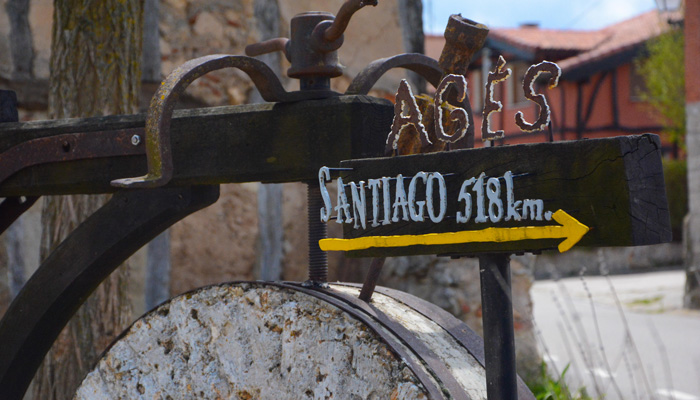The Camino de Santiago: Guided or Self-Guided? Take Your Pick!
Please note: the following was written by Olivia Pittet, a long-time Country Walkers guest and the author of the recent book, The Camino Made Easy: Reflections of a Parador Pilgrim.
However you choose to walk, there’s so much to absorb on this long-distance pilgrimage trail known as the Camino, or the Way of St. James, with its rich medieval cultural heritage and its vibrant modernity, its natural beauty and its legendary past. Whatever your interests and the reasons for your trip, whether as pilgrim or tourist, whether in art or architecture, in history, religion or science, in literature or landscape, or simply physical fitness and a long walk, the Camino has something to suit everyone’s tastes.
Guided Walking
If you opt for a small-group cultural walking tour, either as a couple or as a solo traveler, you will have the benefit of congenial company and 24/7 knowledgeable guides dedicated to enriching your Camino experience, as well as the convenience of a support van. You will explore stunning countryside and three World Heritage cathedral cities, Burgos, León and Santiago de Compostela, which form the Camino’s core. But you will start your trip with Gehry’s Guggenheim in Bilbao, in my view one of Europe’s best small cities in which to decompress after a long-haul flight. Included among the many timeless small villages through which you’ll pass is Atapuerca, a World Heritage site of quite a different, evolutionary stripe, since fossil remains of our early human ancestors have been excavated nearby. And finally, you will have the chance to go see ruggedly beautiful and mythology-rich Finisterre.
Self-guided Walking
You will be free to walk independently at your own pace, to stop and take a break, to eat as and when you wish, or enjoy a particularly beautiful sunrise or sunset. And you will be unlikely to get lost, even without a detailed map, since the Camino is well waymarked, and should you go astray, then even if you don’t speak much Spanish, the locals will happily gesticulate how to get back on track. You will probably, like many on the Camino today, prefer to walk alone, but may opt on occasion to walk and talk, for an hour or even a day, with fellow pilgrims you meet on the trail, many of whom now come not only from Britain but also from North America and Australia, thanks to the popularity of the film “The Way.”
Read, Read, Read!
More than any other walking tour I’ve ever done, whether guided or self-guided, in Europe or North America, the Camino most richly repays, in my view, all the background reading you can possibly do, either before, during or after your trip. To get your physical bearings, carry with you John Brierley’s A Pilgrim Guide to the Camino de Santiago, and for your journey’s cultural orientation, consult The Road to Santiago de Compostela by Michael Jacobs. If you’re the type who prefers to download a novel on Kindle, pick Hemingway’s The Sun Also Rises when passing through Pamplona and Burguete. Of the many personal accounts of through-walking on the Camino, I recommend To the Field of Stars: A Pilgrim’s Journey to Santiago de Compostela by the American Catholic priest Kevin A. Codd, or, for a more secular viewpoint, Robert Mullen’s Call of the Camino: Myths, Legends and Pilgrim Stories on the Way to Santiago de Compostela. Finally, for a book uniquely written from a walking-tour perspective, please try my own publication, The Camino Made Easy: Reflections of a Parador Pilgrim.

